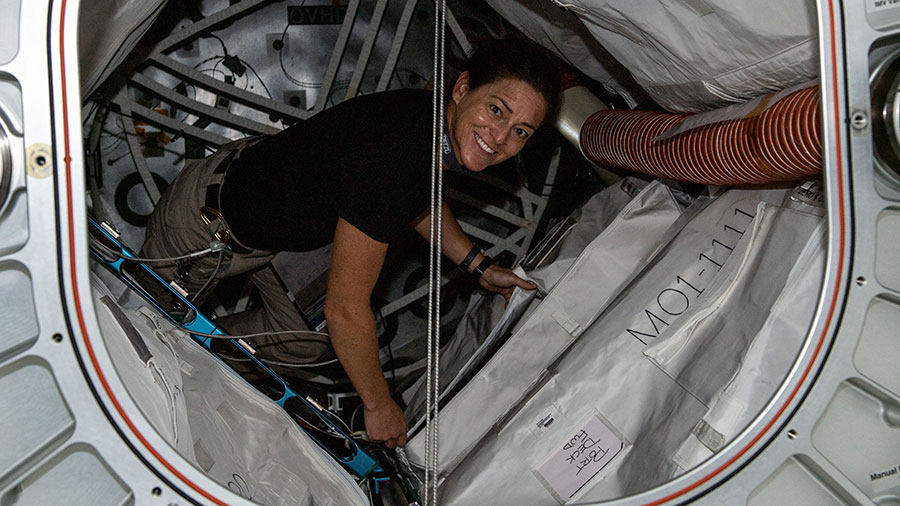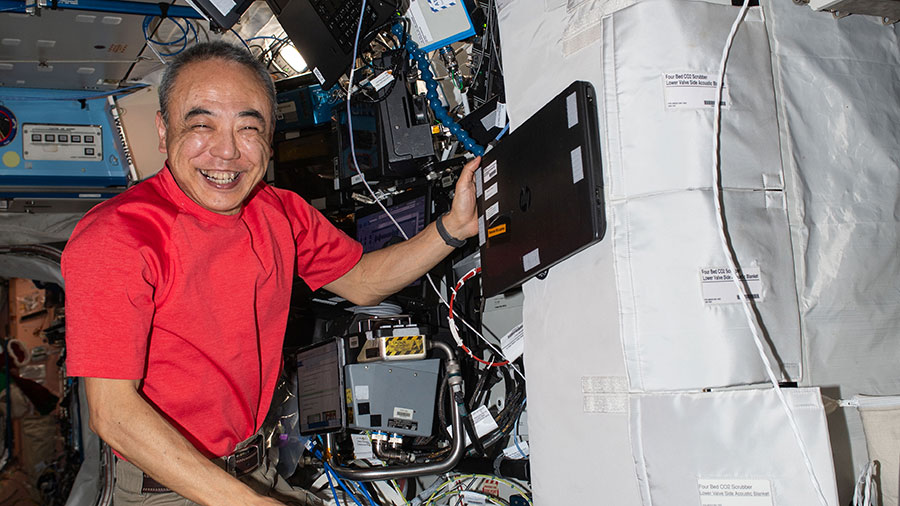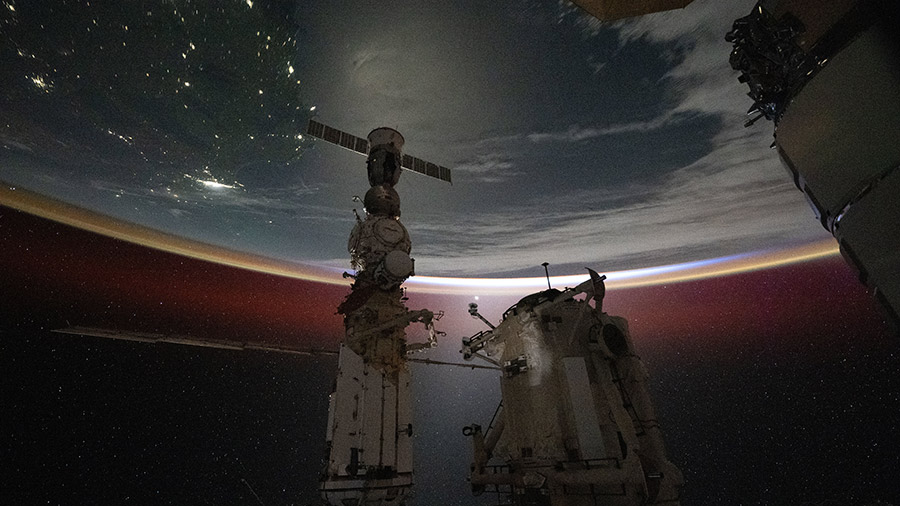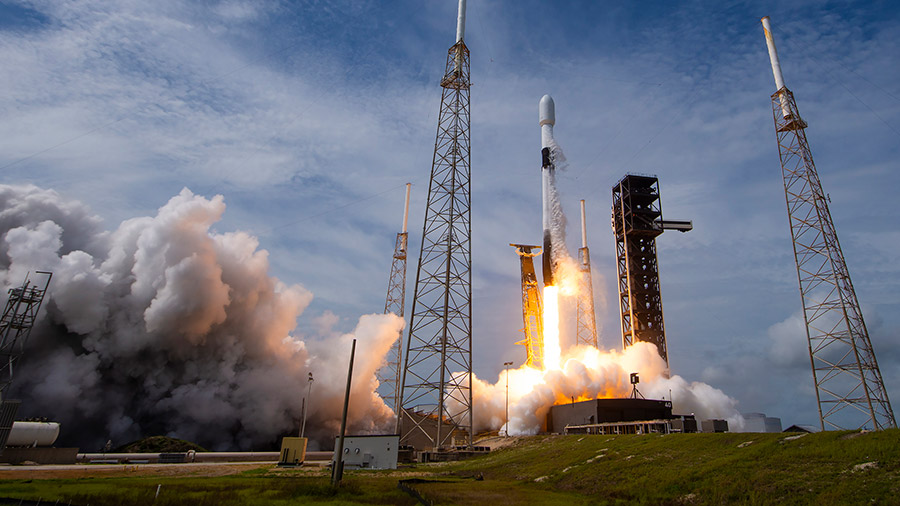
The next cargo mission to resupply the Expedition 68 crew is ready to launch to the International Space Station on Tuesday evening. In the meantime, the seven orbital lab residents worked on a host of human research studies and serviced a pair of spacesuits to start the work week.
The ISS Progress 82 cargo craft stands atop its rocket at the Baikonur Cosmodrome in Kazakhstan counting down to its liftoff at 8:20 p.m. EDT on Tuesday. The Roscosmos resupply ship will orbit Earth for two days before docking to the Poisk module at 10:49 p.m. on Thursday. NASA TV, on the agency’s app and website, begins its live launch broadcast at 8 p.m. on Tuesday and the docking activities beginning at 10:15 p.m. on Thursday.
Commander Sergey Prokopyev and Flight Engineer Dmitri Petelin joined each other on Monday and practiced remotely controlling the Progress 82 cargo craft on a computer. The two cosmonauts were inside the Zvezda service module training on the telerobotically operated rendezvous unit, or TORU, for the unlikely event the Progress 82 would be unable to automatically dock to the space station on its own.
Biomedical studies were at the top of Monday’s schedule for the four astronauts living and working aboard the space station. NASA Flight Engineers Nicole Mann and Josh Cassada started the morning collecting and processing their blood samples before storing them in a science freezer for future analysis. The pair then joined Frank Rubio of NASA and Koichi Wakata of the Japan Aerospace Exploration Agency (JAXA) for a vision test using a standard eye chart. Rubio then assisted Mann as she pedaled on an exercise cycle for a study exploring how weightlessness affects the cardiovascular and respiratory systems. Mann attached Bio-Monitor sensors to herself for the exercise session and recorded physiological data that will be downloaded to doctors on Earth for analysis.
Rubio and Cassada would end the day installing helmet lights and resizing a pair of spacesuits ahead of planned future spacewalks. Mann gathered trash for packing inside the next Northrop Grumman Cygnus cargo vehicle targeted to launch in November. Wakata cleaned the inside the of Microgravity Science Glovebox following research into using artificial intelligence to manufacture fiber optic cables in space.
Cosmonaut Anna Kikina, who launched to the station on the SpaceX Crew-5 mission, spent a portion of her day servicing video and computer hardware before loading data to enable operations with the European robotic arm. She wrapped up her work shift observing Earth’s nighttime atmospheric glow in the near-ultraviolet wavelength.




